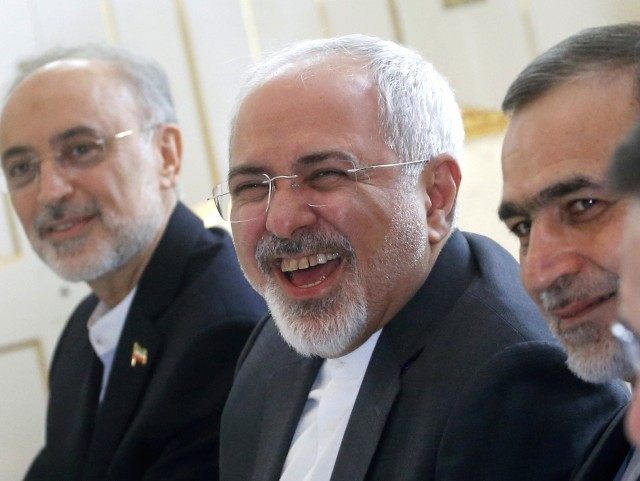Under a side deal reached with the IAEA, Iran will be able to use its own experts and equipment to inspect sites believed to have been used in the past for nuclear weapons research.
The existence of the side deal between the IAEA and Iran has been discussed openly; however, even Secretary of State Kerry has claimed in congressional testimony not to have seen the final agreement.
Now the AP reports that it has seen an unsigned draft of the agreement which is believed to have only minor differences from the final version. The agreement allows Iran to use its own experts and equipment to examine Parchin, a site where Iran is believed to have carried out undisclosed nuclear weapons research more than a decade ago.
According to the agreement, Iran will provide the IAEA with photos and video “taking into account military concerns.” The AP reports that language may indicate that foreign inspectors will not be allowed to visit the site in person and that Iran will retain final say on which areas of Parchin are out of bounds, even via video.
Additionally, the draft deal says inspections, “will be carried out using Iran’s authenticated equipment.” This was discussed, broadly, last month under the rubric of Iran providing its own samples for testing.
Since the final agreement between Iran and the P5+1 was announced, the U.S. intelligence community has provided lawmakers with satellite photos which show heavy construction equipment being used at Parchin. The intelligence community is said to have a high level of confidence that this activity represents an Iranian attempt to sanitize the site prior to inspections set for mid-October. Iranian officials, including the lead negotiator of the nuclear agreement, Javad Zarif, have claimed the satellite photos only show evidence of road work.
Intelligence materials collected by the IAEA from various member states suggest a serious nuclear weapons program was underway in Iran prior to 2003. Resolving the extent and nature of this program–which the IAEA refers to as the past military dimensions (PMD) of Iran’s nuclear program–was made a prerequisite to the sanctions relief in the current nuclear agreement between Iran and the P5+1.
The IAEA first confronted Iran with the documents in 2008. At the time, Iran claimed the documents were “fabricated.” Ever since then, the IAEA has maintained a list of unanswered questions about the PMD of Iran’s nuclear work. In the years since 2008–including throughout final negotiations of the current deal–Iran has denied ever seeking a nuclear weapon. If the IAEA were to turn up evidence that Iran was not being truthful, it could threaten to derail the nuclear agreement in which so much time and political capital has been invested.
One former IAEA official claims the agency has been seeking a way out of the PMD issue. Tariq Rauf of the Stockholm International Peace Research Institute (SIPRI) told the Guardian last month, “The fix is already in. The Americans have said they don’t want a confession.” He was referring to a statement Secretary Kerry made in June (since reiterated by at least two U.S. Senators), “We’re not fixated on Iran specifically accounting for what they did at one point in time or another. We know what they did.”

COMMENTS
Please let us know if you're having issues with commenting.